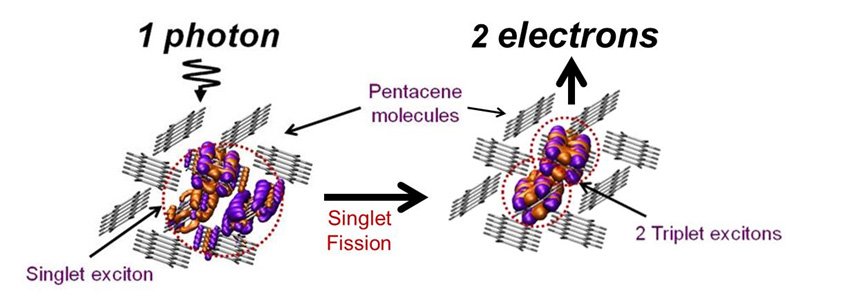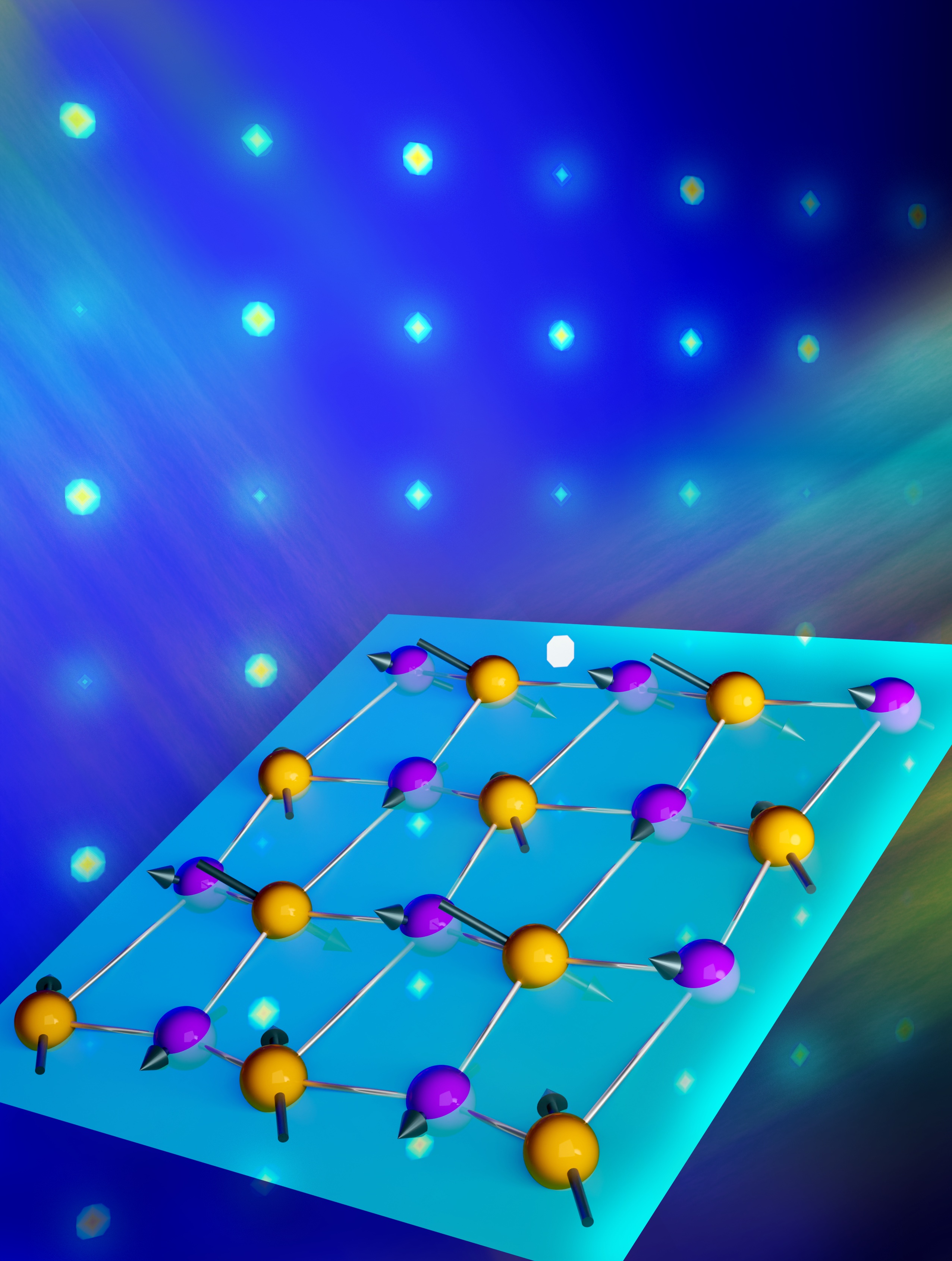Two-for-One Deal for Photovoltaics
Process doubles photocurrent from visible sunlight in organic solar cells.

The Science
Experimental research verified that a process known as “singlet exciton fission” can increase the efficiency of an organic solar cell by yielding more than one electron of current per incident photon in the visible wavelength range.
The Impact
This research demonstrates for the first time the potential to incorporate singlet fission-capable materials in solar cell design and thereby significantly enhance conventional solar cell efficiency, which is currently limited to no more than one electron of current per absorbed photon.
Summary
Conventional solar cells generate a maximum of one electron per incident photon and waste the remaining energy as heat. Singlet exciton fission based solar cells reduce this thermal loss and produce up to two electrons per photon. The process uniquely exploits the conservation of spin under the laws of quantum mechanics to increase its efficiency. Absorption of a photon generates an excited state, or exciton, with a spin of 0, also known as a singlet exciton. The singlet exciton then undergoes fission into a pair of spin 1, or triplet, excitons. The direct decay of the singlet exciton into just one triplet exciton is forbidden because spin must be conserved. Indeed, magnetic field tests confirm a fission yield of 2 triplet excitons per photon for pentacene layers larger than 5 nanometers. Each triplet exciton can be dissociated directly into charge, potentially yielding two electrons per photon. Using solar cells incorporating the prototypical fission material, pentacene, 80% of the triplet excitons were converted to charge. For 70% optical absorption this yielded 109 electrons from 100 photons of incident red light, the first time more than 1 electron per photon has been demonstrated in the visible spectrum. This work suggests that singlet fission could increase the efficiency of conventional solar cells using low-cost coatings.
Contact
Marc Baldo
Director, Center for Excitonics (CE) EFRC
Massachusetts Institute of Technology
baldo@mit.edu
Funding
DOE Office of Science, Basic Energy Sciences, Energy Frontier Research Centers (EFRC) Program
Publications
D.N. Congreve, J. Lee, N.J. Thompson, E. hontz, S.R. Yost, P.D. Reusswig, M.E. Bahlke, S. Reineke, T. Van Voorhis, and M.A. Baldo, Science 340, 334 (2013). [DOI: 10.1126/science.1232994]
Related Links
Special deal on photon-to-electron conversion: Two for one!
The Center for Excitonics at MIT: Fundamental Science for Excitonic Materials and Devices
Highlight Categories
Performer: University



